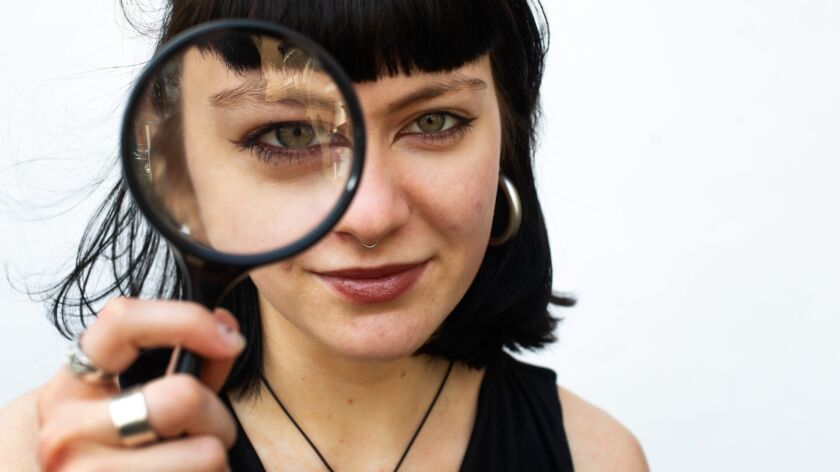What shrimp taught me about perspective
-
 Sara Matiş. Photo: Dick van Aalst.
Sara Matiş. Photo: Dick van Aalst.
In her new column, neurobiology student Sara Matiş takes a close look at the world around her – and the lessons to be learned from nature. In her first column, she explores what shrimp have to do with perception (and body image).
I recently started to question my reality – more than usual, at least. It all started when I was, admittedly, mindlessly scrolling through Instagram. There, I came across a post about the mantis shrimp.
According to the woman in the Instagram video, mantis shrimp can distinguish colour shades that look the same to humans. This was all it took to bring me out of my social media trance – a gifted shrimp. I stopped scrolling and started googling.
This palm-sized animal has up to sixteen types of cells involved in colour vision perception. Humans have only three. Does that mean that a shrimp might see colours in ways unimaginable to us? Yes, likely.
And there are many other animals that see things invisible to us – birds see UV light and some snakes see infrared. They sense layers of the world that don’t exist in our visible spectrum.
As a painter, this sent me into an existential spiral. I often see the world as a composition of nuances. The fact that these colours only exist through my conscious perception of them was both kind of unsettling and intriguing. But then it got me thinking: I don’t need to be humbled by a shrimp to know that perception can be tricky. Even – and perhaps especially – your own.
‘Animals sense layers of the world that don’t exist in our visible spectrum’
Every time I look into the mirror, I see the same green eyes, the same nose, the same faint freckles. Yet sometimes all I can see are my uneven teeth. While, other times, I can see the entirety of my smile and even find it beautiful. But what makes my perspective vary so drastically?
So, the next time I looked into the mirror, I tried to be aware of my gaze wandering over my body as I was pointing out small flaws in my head. I came to notice I was avoiding my eyes. I purposely locked eyes with my reflection and tried to let my criticizing train of thought continue.
To my surprise, it became almost silent. I think looking into my eyes humanized my reflection. It was like accessing another layer of perception. Instead of imperfect patches of skin and features, I couldn’t help but see a person.
Read Sara Matiş's blogs here


